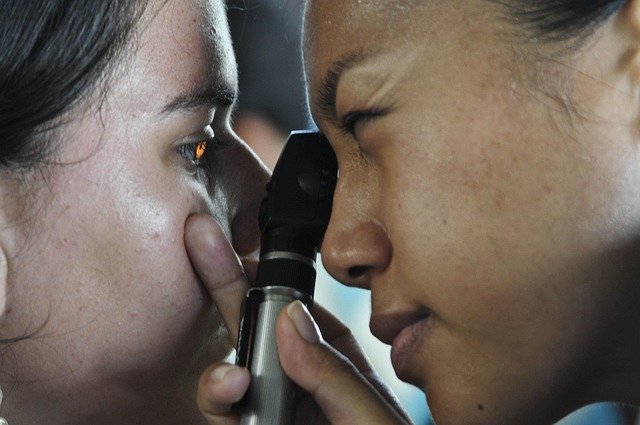Laser Vision Correction: A Clearer View Might Be Closer Than You Think
Laser vision correction procedures like LASIK and PRK reshape the cornea to help light focus more accurately on the retina. These treatments are typically used to correct refractive errors such as nearsightedness, farsightedness, and astigmatism. For many people, this approach offers greater visual freedom with minimal recovery time, though results can vary based on individual factors.

Modern laser vision correction represents a significant advancement in ophthalmology, transforming how people approach vision problems. The procedure involves using specialized lasers to precisely reshape the cornea, the clear front surface of the eye, to correct refractive errors such as nearsightedness, farsightedness, and astigmatism.
The technology behind laser vision correction has evolved considerably since its introduction. Various techniques are available, each designed to address specific vision issues and patient needs. The procedure typically takes only minutes per eye and is performed on an outpatient basis, making it accessible to many individuals seeking vision improvement.
What Is Laser Vision Correction and How Does It Work?
Laser vision correction encompasses several procedures that use laser technology to reshape the cornea. The most common approach involves creating a thin flap in the cornea’s surface, then using an excimer laser to remove microscopic amounts of tissue from the underlying corneal layer. This reshaping process corrects the way light enters the eye, potentially improving focus and reducing dependence on glasses or contact lenses.
The procedure begins with comprehensive eye examinations to determine candidacy and create a personalized treatment plan. Advanced mapping technology measures the eye’s unique characteristics, ensuring precise laser application. During the actual procedure, patients remain awake while numbing drops provide comfort.
Understanding the Lasik Eye Surgery Guide Process
A comprehensive lasik eye surgery guide typically outlines the step-by-step process from initial consultation to recovery. The journey begins with a thorough eye examination, including corneal thickness measurements, pupil size assessment, and overall eye health evaluation.
Pre-operative preparation involves discontinuing contact lens wear for a specified period, as contacts can temporarily alter corneal shape. Patients receive detailed instructions about medications to avoid and what to expect on surgery day. The actual procedure involves positioning under a laser system, where a specialized instrument holds the eyelids open while the laser performs its precise work.
Post-operative care includes using prescribed eye drops, avoiding certain activities, and attending follow-up appointments to monitor healing progress.
Examining Laser Eye Surgery Risks and Considerations
Like any medical procedure, laser eye surgery risks must be carefully considered. Common temporary side effects may include dry eyes, glare, halos around lights, and fluctuating vision during the healing period. Most of these effects typically resolve within weeks or months as the eyes heal.
More serious complications, though rare, can include infection, persistent dry eyes, or vision changes that require additional treatment. Certain individuals may not achieve their desired vision correction and might still need glasses or contact lenses for some activities.
Factors that may increase risks include thin corneas, large pupils, severe refractive errors, or certain medical conditions. Age, pregnancy, and unstable vision prescriptions can also affect candidacy and outcomes.
Common Vision Correction Questions and Answers
Many vision correction questions arise when considering laser procedures. Age requirements typically range from 18 to ensure prescription stability, though some providers prefer patients be at least 21. The procedure’s permanence is another frequent concern - while results are generally long-lasting, natural age-related vision changes can still occur.
Recovery time varies among individuals, but many people return to normal activities within days. However, complete healing may take several weeks to months. The procedure’s success rate is generally high, with most patients achieving 20/40 vision or better, though individual results vary.
Cost considerations often influence decisions, as laser vision correction is typically not covered by basic insurance plans, though some flexible spending accounts may apply.
Eye Surgery Providers and Treatment Options
Selecting qualified eye surgery providers requires careful research and consideration. Board-certified ophthalmologists with specialized training in refractive surgery typically perform these procedures. Many providers offer different laser technologies and treatment approaches to accommodate various patient needs.
| Provider Type | Services Offered | Key Features |
|---|---|---|
| Academic Medical Centers | Comprehensive laser vision correction | Research-based approaches, resident training programs |
| Specialized Laser Centers | Multiple laser technologies | High-volume experience, latest equipment |
| Private Ophthalmology Practices | Personalized care options | Individual attention, established patient relationships |
| Chain Vision Centers | Standardized procedures | Consistent protocols, multiple locations |
When evaluating providers, consider factors such as surgeon experience, technology available, patient satisfaction rates, and follow-up care policies. Many reputable providers offer free consultations to assess candidacy and discuss treatment options.
The decision to pursue laser vision correction involves weighing potential benefits against risks and costs. While many people achieve excellent results and reduced dependence on corrective eyewear, individual outcomes vary. Thorough research, realistic expectations, and choosing qualified providers contribute to successful experiences. Consulting with eye care professionals helps determine whether laser vision correction aligns with individual vision needs and lifestyle goals.




